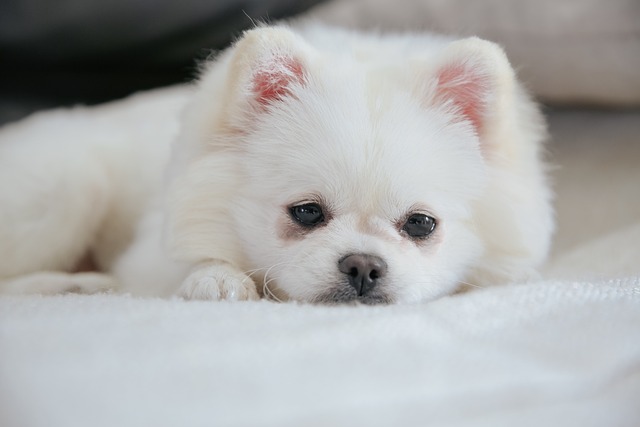
How do i train my dog to be obedient?
Watching your dog dart across the park ignoring your calls isn’t just frustrating—it can put them at risk near busy streets or public spaces.
Training your dog to poop in a specific spot saves frustration, keeps your yard tidy, and even helps when navigating public spaces where pet waste rules are strict. The process relies on consistency, timing, and understanding your dog’s natural rhythms—no harsh methods needed. With a little patience, most pups catch on faster than you might think.
Start by choosing the right location. Pick a spot that’s easy for both of you to access, away from their food and water bowls (dogs prefer not to eliminate near where they eat). If you live in an apartment, a designated corner with pee pads or artificial grass works well. For yards, a quiet area with soft soil or mulch often appeals to dogs—they like surfaces that are easy to dig into a bit, which is part of their instinct.
Timing is everything. Dogs usually need to go after meals, naps, or playtime, so plan walks or trips to the spot around these times. When you get there, stay calm and avoid distractions—no phone scrolling or chasing other pets. Use a simple cue like “go potty” in a gentle tone; repetition helps them link the phrase to the action. Stand still and wait—rushing them can make them anxious, which slows things down.
Reward immediately when they do their business in the right spot. A small, tasty treat (think freeze-dried liver or cheese) works wonders, as does enthusiastic praise and a quick belly rub. Dogs thrive on positive reinforcement, and connecting the behavior to something good makes them want to repeat it. Just make sure the reward comes within seconds—delaying it confuses them about what they’re being praised for.
 Accidents will happen, especially with puppies or newly adopted dogs. If you catch them mid-accident, calmly interrupt with a soft “uh-oh” and gently guide them to the designated spot. Never scold or punish them after the fact—they won’t connect the discipline to the earlier mistake, and it can make them afraid to go in front of you at all. Clean up accidents thoroughly with an enzymatic cleaner to remove odors; leftover smells encourage them to go in the same spot again.
Accidents will happen, especially with puppies or newly adopted dogs. If you catch them mid-accident, calmly interrupt with a soft “uh-oh” and gently guide them to the designated spot. Never scold or punish them after the fact—they won’t connect the discipline to the earlier mistake, and it can make them afraid to go in front of you at all. Clean up accidents thoroughly with an enzymatic cleaner to remove odors; leftover smells encourage them to go in the same spot again.
Stick to a routine. Dogs feel secure with predictability, so feeding them at the same times each day helps regulate their bathroom schedule. Taking them out first thing in the morning and right before bed also reduces nighttime accidents. If you’re away during the day, consider a dog walker or pet sitter to maintain the routine—consistency is key, even when life gets busy.
Be mindful of local rules, too. Many areas require cleaning up after your dog in public, and some have fines for leaving waste in parks or sidewalks. Carrying poop bags isn’t just polite—it’s often the law. When training, keeping a supply handy teaches your dog that going in certain spots (like your yard) means you’ll handle the mess, which reinforces good habits even when you’re out and about.
Older dogs or those with health issues might need extra patience. If your dog suddenly starts having accidents after being trained, it could be a sign of a medical problem—check with your vet to rule out issues like bladder infections or mobility problems. Addressing health concerns first makes training much more effective.
Remember, every dog learns at their own pace. Some pick it up in a week, others take a few months. Celebrate small wins—a near-miss where they headed toward the spot, or a quick stop there even if nothing happened. The goal is to build trust, so keep sessions short and positive. Over time, that specific corner of the yard or apartment will become as familiar to them as their favorite napping spot.

Watching your dog dart across the park ignoring your calls isn’t just frustrating—it can put them at risk near busy streets or public spaces.

New puppy owners often find themselves rushing to clean up accidents before they set in, and that’s where puppy pad training becomes a game-changer.

If you've noticed your dog's waistline disappearing and your veterinarian has mentioned those few extra pounds, your first instinct might be to simply reduce the amount of food in their bowl.

Training a dog to use a designated spot indoors isn’t as daunting as many new owners fear, but it does take consistency and an understanding of your pet’s needs.

That moment of dread on a walk is all too familiar for many new dog owners. You see another dog approaching down the sidewalk of your neighborhood

If the sight of another dog on your neighborhood walk makes your heart sink as your own dog erupts into a frenzy of barking and lunging, you're not alone.